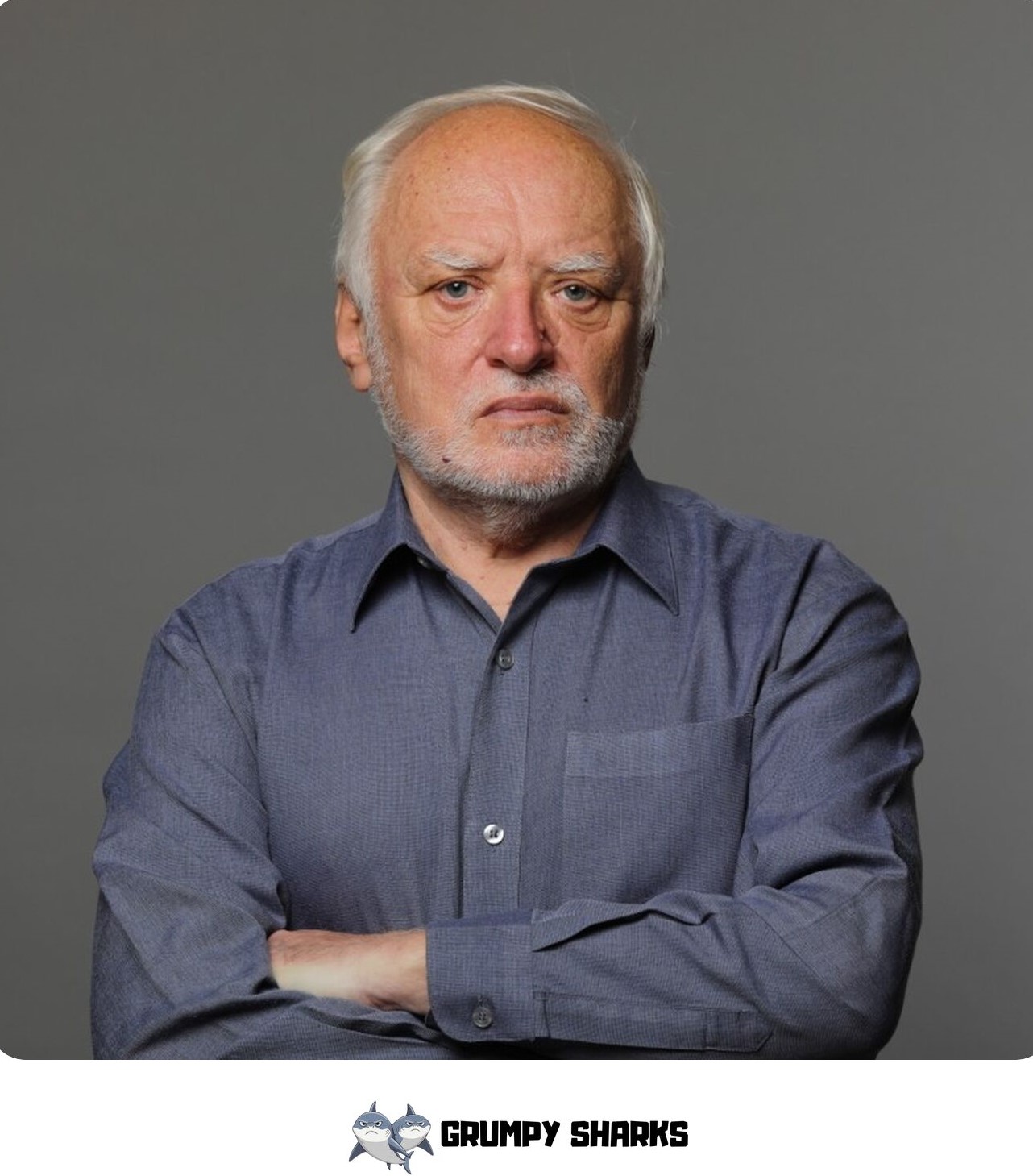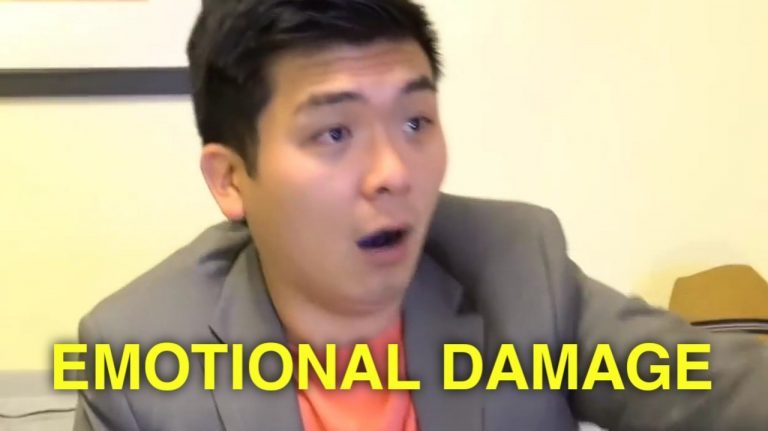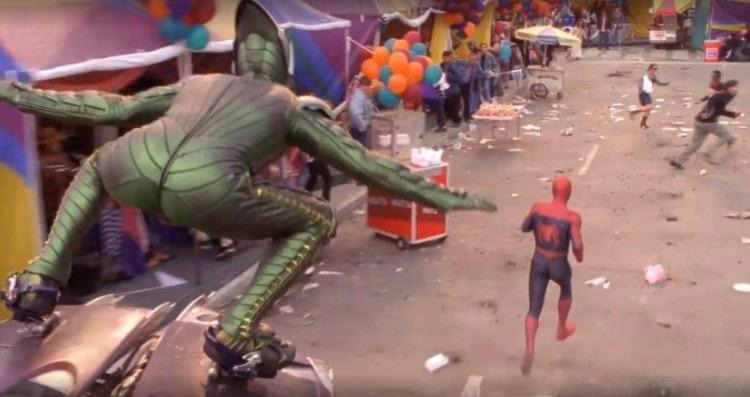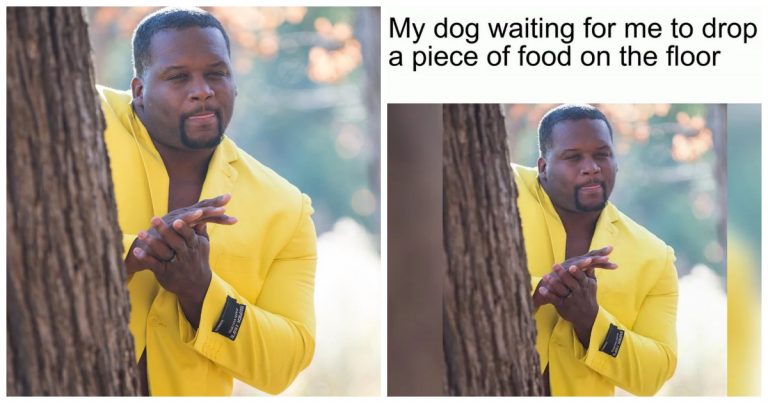Old Man Meme Origins: The Real Story Behind ‘Hide the Pain Harold’ and His Iconic Grimace
Old Man Meme: The internet is home to many unforgettable faces—but none may be more recognizable than Hide the Pain Harold, the older man with a seemingly cheerful smile, whose eyes seem to say, “I’m fine” while his soul screams inside. Harold went from a generic stock image to a meme that personified the internal struggles that we all face.
In this Grumpysharks’ deep dive, we explore the man behind the meme, the cultural moments that led to virality, and why Harold’s forced smile is a globally recognized representation of emotional camouflage.
#1 Who Is “Hide the Pain Harold”?
“Hide the Pain Harold” is the name given to a series of stock photos featuring a man with silver hair and a strained smile and tired eyes. His awkward expression resonated mightily with people on the internet, and users began adding captions to the image that expressed some inner signs of frustration and some existential dread.
His face—a mix of happiness and discomfort—provided an ideal metaphoric visual for grinning through the grind. The name “Hide the Pain Harold” was first coined by internet users as early as 2011, and the phrase gained traction as a useful shorthand for how well the moniker captured the quality of the images.
#2 Who Is the Real Man Behind the “Hide the Pain Harold” Meme (Or Old Man Meme)?
While Harold is fictional, he represents András Arató, a Hungarian electrical engineer who unconsciously entered the realm of stock modeling during retirement. While vacationing in Iceland, he posted a few photos of himself, and was contacted by a photographer asking if András would allow them to use him as a stock model. András agreed, unaware that he would become a sensation and ubiquitous on the internet.
When András discovered that his face had become memes, he was surprised, then amused. Despite the awkward fame and misconceptions, András made the most of it because he was as charming and good-natured in real life as his meme persona (initially distressing) is portrayed online.
#3 How Did the “Hide the Pain Harold” Meme (Or Old Man Meme) First Begin?
In 2011–2012, me-me edits of Harold made their appearance mostly on 9GAG, Reddit and Facebook. Obviously, users began to exploit the strange combination of humility/joy/sadness of these stock images.
The stock photographs included images of Harold in sets of images where he was drinking coffee, working at a laptop, smiling in a kitchen. The image of his expression – a little tight-lipped with hollow eyes – was what made the image so relatable as meme content. This disconnection between facial happiness and emotional discomfort seemed to be the emotional nexus of the meme.
#4 What Is The Meme’s Iconic Format and Themes?
The original format of the Harold meme format attaches the image to a caption exposing the internal conflict behind the polite smile. Some common themes include:
- Pretending to enjoy a job that you do not enjoy
- Smiling through emotional breakdowns
- Large- or small-scale awkward, or hopeless situations
Harold became a proxy for passive suffering, the emotional firewall of the everyman. His image was used to respond to minor, mundane tragedies with understated, universal mental fatigue.
#5 How ‘Hide the Pain Harold’ Went Viral?
The initial signs of virality formed on October 23 2011 when a Facebook page titled “Hide the Pain Harold” was created. After that, a page titled “Maurice” (the fan-given alternative name) emerged in January 2014, and also gathered over 10,000 likes.
On May 5, 2014, a fictional narrative of Harold’s expression appeared on 4chan’s /b/ on a long-form memorial thread in which he was portrayed to be a sad man who is obligated to smile through stock photography. Then the memorial thread was captured into an Imgur gallery by a user named someshitbag, gaining over 880,000 views in three weeks. Then further virality moved to a YouTuber named ChinnyxD posted a text-to-speech adaptation of the thread on September 10 2014, building further virality around Harold.
At the same time, /r/youdontsurf was created on October 31 2013 as a subreddit dedicated to surreal stock image memes, including Harold, as well as several pictures of Harold were included on MemeCenter most commonly with jokes and edits about sex or awkwardness.
Harold’s tipping point occurred in 2016 when Arató confirmed his identity on the Russian social network VK and then also confirmed in Reddit posts and videos on YouTube gave containment to many previously only partially observed memes and transformed him as a person versus meme as human.
There was widespread content remixing appearing across platforms (i.e. Reddit, YouTube, Facebook, and niche subreddits etc. )
#6 FAQs About the “Old Man Meme”
1. Is András Arató still active online?
Yes! He’s on Instagram and Facebook, often sharing meme content and engaging with fans.
2. Where can I find the original stock images?
The original photo sets are hosted on stock sites like Dreamstime and iStock under commercial licenses.
3. Has Harold profited from the meme?
While the early photos weren’t profitable, András later earned through speaking gigs, appearances, and campaigns.
Are there other memes from the same photo set?Yes—many photos of Harold in different settings have been used with varying captions. Some even sparked new meme formats.
#7 Conclusion: More Than a Meme — The Story of a Smile That Spoke Volumes
“Hide the Pain Harold” is not only a clever punchline. He is a piece of cultural artifact–ambassador for the country that internet humor thrives on both contradictions and commonalities. The person behind the meme is a real person, there is a real story, and that smile implied more than what it ever showed.
At Grumpysharks, we certainly see Harold as just a face. He is a representation of our favorite coping mechanism in this digital age, when we laugh through the discomfort. And, it was only because of András Arató’s grace and humor that the meme became anything but mundane! We dare say it became one of the rarest things, which is a representation of collectively awkwardness buried behind that grin.









